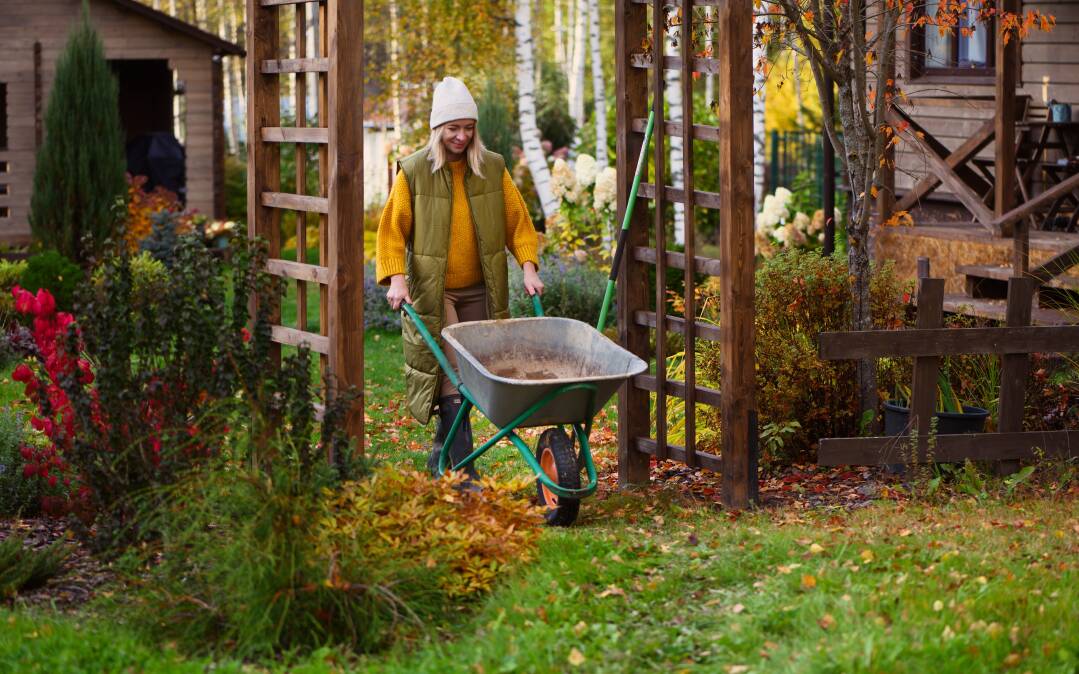Spring snares almost everyone into dreaming they will actually become a gardener this year. They buy a pot of basil, a punnet of tomatoes, a dozen petunia plants and some parsley...most of which die before their owner remembers to plant them. That is how garden centres make money- repeat customers.
Anyone can have ripe tomatoes in summer. Back in high school a tomato plant, possibly from someone's salad sandwich, began to grow in a crevice in the concrete, and was given absolutely no care, feeding or watering. We girls hoped it might be a marihuana plant - which none of us had ever seen, so couldn't identify. By the time its first crop was ripe we were resigned. But they were pretty good-tasting tomatoes.

Mid-autumn is the season when you find truly dedicated gardeners getting their hands dirty, those who have put in crops of leeks, snow peas, purple cauliflowers and Italian broccoli weeks or even months ago to munch through winter, and who are manipulating their planting now so they have a harvest in spring, not counting the asparagus and artichokes they already have waiting to pick among the last of the frosts.
Sadly Canberra's main vegie planting time is just about over, unless you plant a box or three of mini greens - scatter lettuce and kale seeds in a box in a sunny spot to snip the tiny leaves off as babies, and then let more small leaves grow. But there are still crops to plant now - if you are dedicated.
Many of the Chinese bok choi-like greens grow fast enough to have a crop by winter. There are also some fast-yielding cabbage varieties, like Enfield Market or Sugarloaf that will be ready for spring eating if planted now, plus indestructible kale of various colours, spinach, and early broad beans.
Spinach needs to grow in cool and cold weather or it goes to seed. It's delicious - much sweeter and with a quite different texture than the silverbeet we Australians have been calling spinach for the past 200 years or so, because it is also green but survives Australian summers, except in the most arid areas, where early colonial gourmets had to make to with pumpkin tendrils for their summer greens before the advent of frozen peas. Grow spinach quickly to get a good crop, with old hen manure and plenty of water.
Broad beans sown now may be susceptible to aphids, though there are so many small birds to feast on them this year, hopefully they will be digested before you notice them. Otherwise just nip off the top leaves, wash off the aphids, or keep them for added protein, steam them and eat them, and that will be the end of the aphid problem.
You might possibly get an early winter harvest of broad beans planted now, especially if we have an 'Indian summer' kind of autumn, which we seem to be having more often than not these last couple of decades. Mulch the plants well, stop them falling over in winter, and as soon as the weather warms up the plants will start setting fruit again.
Plant early onions, like flat white, now too, and prepare the ground prepared for later onion plantings. Onions don't like weeds. They grow slowly, so any competition will suffocate them.
What else are dedicated Canberra gardeners putting in? Small, hardy, red mignonette or buttercrunch type lettuces, that might just get big enough by the time the soil cools down? Celery, which won't grow big stems but will grow delicious tender leaves through winter, far better than the tougher parsley? Potatoes, for an early spring crop? Pansies, primulas, Iceland poppies, the 'thee p's' of winter flower? Heartsease, like tiny pansies? Wintercress? Warrigal spinach, a native green that needs two lots of boiling to remove oxalic acid before you eat it?
Let me know if you have a secret crop of flowers or veg that does wonderfully in our climate, preferably without a greenhouse. Always remember, when it comes to flowers and veg, soil temperature is just as important as the heat or coldness of the air. If it's a warm day, but too cold to sit on the bare ground, the time for autumn planting is over.
This week I am:
- Discovering all over again that the way to tell if a melon is perfectly ripe is to sniff it. No fragrance? It's still maturing. Try tapping them too, to see if they sound hollow.
- Urging everyone to plant citrus and other evergreen trees and shrubs now, while they can start to establish a new root stem before the soil gets really cold. Heat and dry weather kills more trees than the cold in our climate.
- Challenging truly dedicated gardeners to plant tip cuttings of native plants now. Dip the cuts in a commercial "cutting mix" then stick them in a pot of 25 per cent compost or peat moss and 75 per cent sand. Keep them moist, and in dappled shade, and most will take, and then half at least will die in the next few months, unable to grow a decent enough root system to continue. But you should still have a goodly number of free and gorgeous plants to keep or give away.
- Trying to find homes for 10,000 emerging chokos. Choko and lime marmalade, anyone? Sate choko? Malaysian choko curry?







